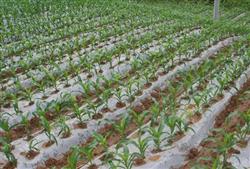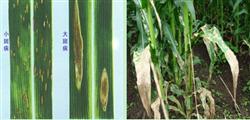We should pay attention to the selection of spring sowing corn.

How to select good maize varieties is a key issue related to whether the yield can be increased in autumn. When selecting improved varieties of corn, farmers should follow the following principles: first, seed selection according to the conditions of heat resources. The local heat resources are related to the growing period of maize varieties. The maize varieties with long growing period have good yield performance and high yield potential, and the local heat and growth period should meet the needs of full maturity of the varieties. If the heat is sufficient, the corn varieties with longer growth period should be selected as far as possible, so that the production potential of the excellent varieties can be brought into full play. However, too much pursuit of high yield and the use of maize varieties with too long growth period will lead to the lack of full maturity and grain fullness, which will affect the nutrition and quality of corn. Therefore, the selection of maize varieties should not only ensure the normal maturity of corn, but also can not affect the timely sowing of the next crop. The topography is related to the ground temperature, and the hilly land temperature is high, so it is appropriate to choose late-maturing varieties or mid-late-maturing varieties with long growth period, mid-late-maturing varieties in flat land and mid-early-maturing varieties in depression. Second, seed selection according to local production management conditions. The high yield potential of maize varieties is related to the production management conditions, the varieties with high yield potential need good production management conditions, and the varieties with low production potential need relatively low production management conditions. Therefore, the maize varieties with high yield potential and high yield potential can be selected in the areas with high level of production management, fertile soil and abundant water source. On the contrary, the varieties with lower production potential but better stable performance should be selected. Third, select seeds according to the previous planting. The yield and income increase of corn is directly related to the previous planting. If soybean is planted in the previous crop, the soil fertility is better, and high-yield varieties should be selected; if corn is planted in the previous crop with good growth and high yield, this variety can continue to be selected; if the previous corn is infected with a certain disease, the varieties prone to this disease should be avoided in seed selection. In addition, the same variety can not be planted in the same plot for three or four years, otherwise the land will be barren and the varieties will be degraded. Fourth, select seeds according to diseases. Disease is the nemesis of high yield of maize, which is mainly related to soil. The soil nutrients are not balanced and the soil temperature is abnormal, so the varieties which are not suitable for growing under this condition should be avoided in seed selection. For example, "Denghai 9" is only suitable for growing in plots with balanced soil nutrients and high maturity. Fifth, select seeds according to the appearance of seeds. The purity and quality of corn varieties directly affect the yield of corn. If the purity of primary corn seeds (purity 98%) decreases by 1%, the yield will decrease by 0.61%. The selection of high quality varieties is a favorable guarantee for high yield of maize. The high-quality seed bag is sealed at one time, with the name and detailed address and telephone number of the seed company; the production date, purity, moisture and bud percentage are clearly marked on the seed label; and the shape, size and color of the seed are neat and consistent. Sixth, select seeds according to local precipitation and accumulated temperature. According to experience, the amount of snow in winter last year is small, the winter is not cold, the next summer rainfall will be more, the accumulated temperature will not be high, the growing period is too long, the accumulated temperature is not enough, affecting maturity. On the contrary, there is a large amount of snow in last winter, very cold in winter, less rainfall in the following summer and high accumulated temperature, so it is appropriate to choose varieties with strong drought resistance.
- Prev

Key points of sowing and Seedling Protection techniques of Spring Maize
1. Fattening nursery bed: fertilizing bed is used to raise seedlings, rape seedbed is selected, and dry nursery pond is used as spring corn nursery bed. If the seedling bed is kept in proportion, the ratio of the seedling bed to the field area is 1: 20 when the bowl diameter is 5 cm, and the ratio of the seedling bed to the field area is 1: 10: 15 when the bowl diameter is more than 7 cm. Early in the morning.
- Next

Control techniques of Maize Leaf spot and Leaf spot
Corn leaf spot and small leaf spot are mainly harmful to leaves, and sometimes infect leaf sheaths and bracts. Leaf spot can not only damage the above-mentioned parts, but also damage ears. In many areas, these two diseases are collectively referred to as "corn spot". 1. Symptom recognition: the typical symptom of corn leaf spot is the rapid expansion of small spots and the growth of large edges.
Related
- The first cup of black tea in spring, the flavor and history of tea gardens in Kenya, Africa
- The computer can not only choose potatoes, but also grow tea rice. AI will grow winter oolong tea champion.
- It is not only the inflated tea bitten by insects, but also engraved with the four seasons tea in Beipu.
- The Oriental Beauty Tea Festival in Zhuxian County takes the stage at the weekend to experience the plus-size feast of oil tea.
- & quot; Oriental Beauty Tea & Exploration of Emei in Hsinchu, the hometown of quot;
- The new variety of strawberry "Tainong 1" dessert is the first choice with mellow aroma. Crimson gorgeous
- History of Tea in Taiwan: from Wild Inner Mountain to Export Tea Garden
- Two types of Taiwan Oriental Beauty Black Tea won the British three-Star Award for Childhood Tea Xiang Zhang Jiaqi changed from pilot to champion tea maker.
- Banana species and varieties: the planting history of Taiwan Xianren banana and dwarf banana is long, is banana disease resistant?
- Coffee planting Technology: Qianjie Coffee from Seedling to harvesting

